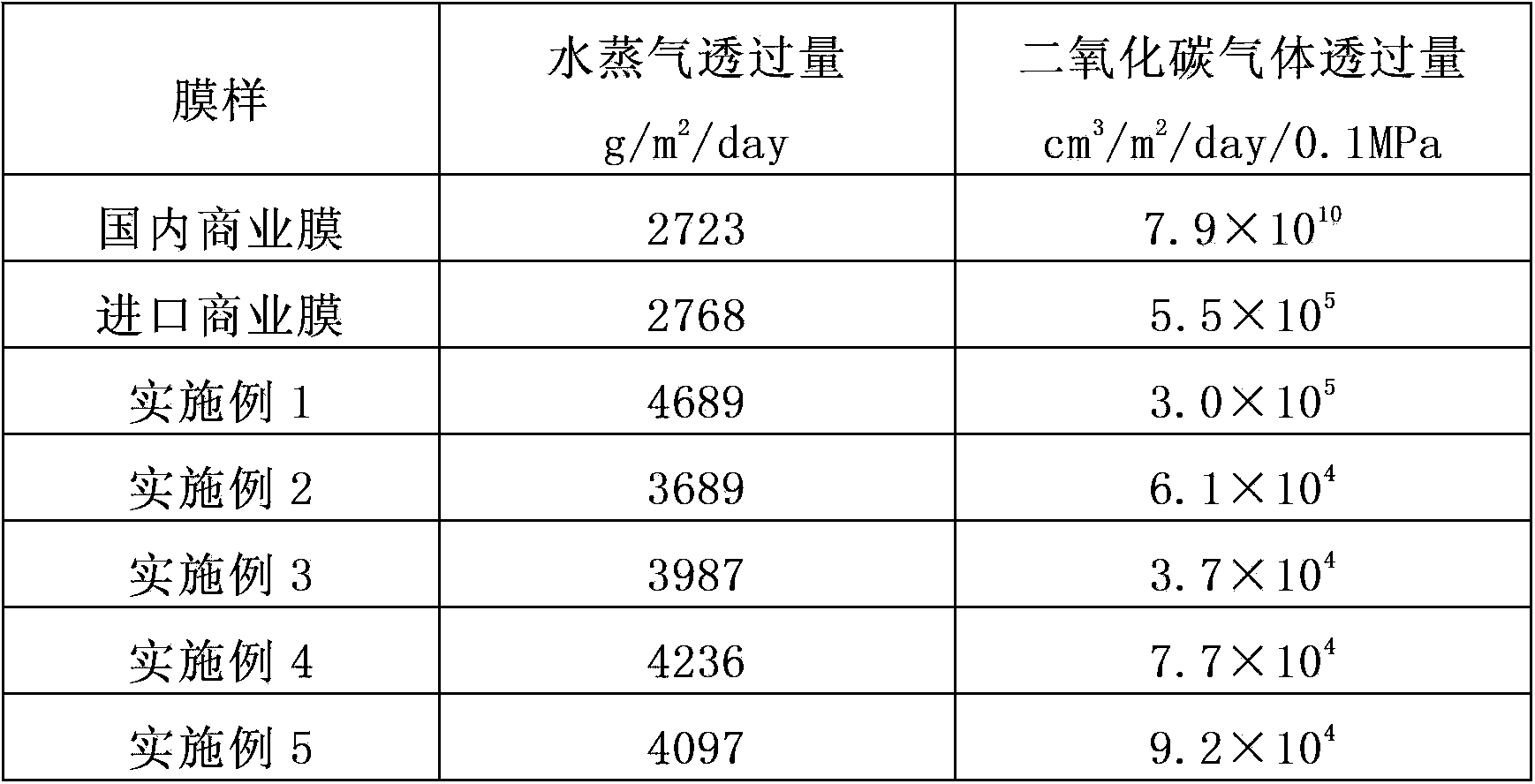Novel efficient total heat exchange membrane and total heat exchanger
A technology of total heat exchange membrane and polymer, which is applied in the field of new high-efficiency total heat exchange membrane and total heat exchanger, can solve the problem of incomparable performance, low heat exchange efficiency and energy efficiency ratio, and new air energy exchanger total heat exchange. Membrane performance is not up to the problem, to achieve the effect of improving harmful gas barrier, improving enthalpy and moisture exchange efficiency, and improving indoor air quality
- Summary
- Abstract
- Description
- Claims
- Application Information
AI Technical Summary
Problems solved by technology
Method used
Image
Examples
preparation example Construction
[0062] Preparation method of total heat exchange membrane
[0063] The preparation method of total heat exchange membrane of the present invention comprises the following steps:
[0064] (a) providing the first casting solution containing the first high polymer, the first moisture absorbing agent, and inorganic functional additives; providing the second casting solution containing the second high polymer and the second moisture absorbing agent;
[0065] (b) forming a film from the first casting solution obtained in step (a), optionally, casting the first casting solution on the second support layer to form a film;
[0066] (c) compounding the inorganic salt on the membrane prepared in the step (b) to obtain the first supporting layer;
[0067] (d) casting the second casting solution on the first supporting layer obtained in the step (c), and compounding to obtain the total heat exchange membrane according to claim 1, wherein,
[0068] The first high polymer, the second suppo...
Embodiment 1
[0097] Step (1). Dissolve 15 parts of cellulose acetate in 150 parts of acetic acid aqueous solution with a mass content of 80%, and then add 10 parts of n-methylpyrrolidone, 5 parts of lithium chloride and 3 parts of 4A molecular sieves, and stir at 45 °C for 18 hours , dissolved to obtain a uniformly dispersed casting solution;
[0098] Step (2). Put the casting solution obtained in step (1) at 45° C. under negative pressure or leave it standing for 10 hours for defoaming;
[0099] Step (3). Apply the defoamed casting solution to 80g / m 2 On ordinary cellulose paper, the thickness is controlled to 140 μm, and then put into water for phase transition curing;
[0100] Step (4). The cured film is soaked in 12% lithium chloride solution for 24 hours to obtain a hydrophilic polymer support layer;
[0101] Step (5). Dissolve 10 parts of polyvinyl alcohol in 90 parts of distilled water, then add 10 parts of sorbitol, stir at 90° C. for 18 hours, and dissolve to obtain a uniformly ...
Embodiment 2
[0106] Step (1). Dissolve 90 parts of glacial acetic acid and 10 parts of cellulose acetate, then add 6 parts of glycerin and 1 part of X-type molecular sieve, stir at 55°C for 12 hours, and dissolve to obtain a uniformly dispersed casting solution;
[0107] Step (2). Put the casting liquid obtained in step (1) at 60° C. under negative pressure or leave it standing for 10 hours to perform defoaming;
[0108] Step (3). Apply the defoamed casting solution to 60g / m 2 Polypropylene non-woven fabric with a controlled thickness of 80 μm, and then enters the water tank for phase transition curing;
[0109] Step (4). The cured film is soaked in 20% calcium chloride solution for 30 hours to obtain a hydrophilic polymer support layer;
[0110] Step (5). Dissolve 12 parts of polyethylene glycol in 75 parts of ethanol, then add 13 parts of lithium chloride, stir at 70° C. for 15 hours, and dissolve to obtain a uniformly dispersed casting solution;
[0111] Step (6). Put the casting solu...
PUM
| Property | Measurement | Unit |
|---|---|---|
| thickness | aaaaa | aaaaa |
| thickness | aaaaa | aaaaa |
| particle size | aaaaa | aaaaa |
Abstract
Description
Claims
Application Information
 Login to View More
Login to View More - R&D
- Intellectual Property
- Life Sciences
- Materials
- Tech Scout
- Unparalleled Data Quality
- Higher Quality Content
- 60% Fewer Hallucinations
Browse by: Latest US Patents, China's latest patents, Technical Efficacy Thesaurus, Application Domain, Technology Topic, Popular Technical Reports.
© 2025 PatSnap. All rights reserved.Legal|Privacy policy|Modern Slavery Act Transparency Statement|Sitemap|About US| Contact US: help@patsnap.com

